Of employees prefer hybrid work model
(mix of in-person and remote work).
Of employers plan to offer some
hybrid working model in the coming future.
Of high-growth companies use
“productivity anywhere” hybrid work models.
HYBRID WORK TECHNOLOGY
Technology brings people and spaces together in the hybrid workplace.
The success of a hybrid work model within the organization relies on the effective collaboration between HR, Facility management, and IT teams:
Human Resources teams set up policies that support the hybrid work culture and foster employee engagement.
Facility Management ensures that the hybrid workplace is optimized, cost-efficient, and meets the diverse needs of employees.
IT teams provide the technology infrastructure that enables seamless collaboration and ensures data security.
HYBRID WORK TECHNOLOGY
Technology brings people and spaces together in the hybrid workplace.
The success of a hybrid work model within the organization relies on the effective collaboration between HR, Facility management, and IT teams:


Human Resources teams set up policies that support the hybrid work culture and foster employee engagement.
Facility Management ensures that the hybrid workplace is optimized, cost-efficient, and meets the diverse needs of employees.
IT teams provide the technology infrastructure that enables seamless collaboration and ensures data security.
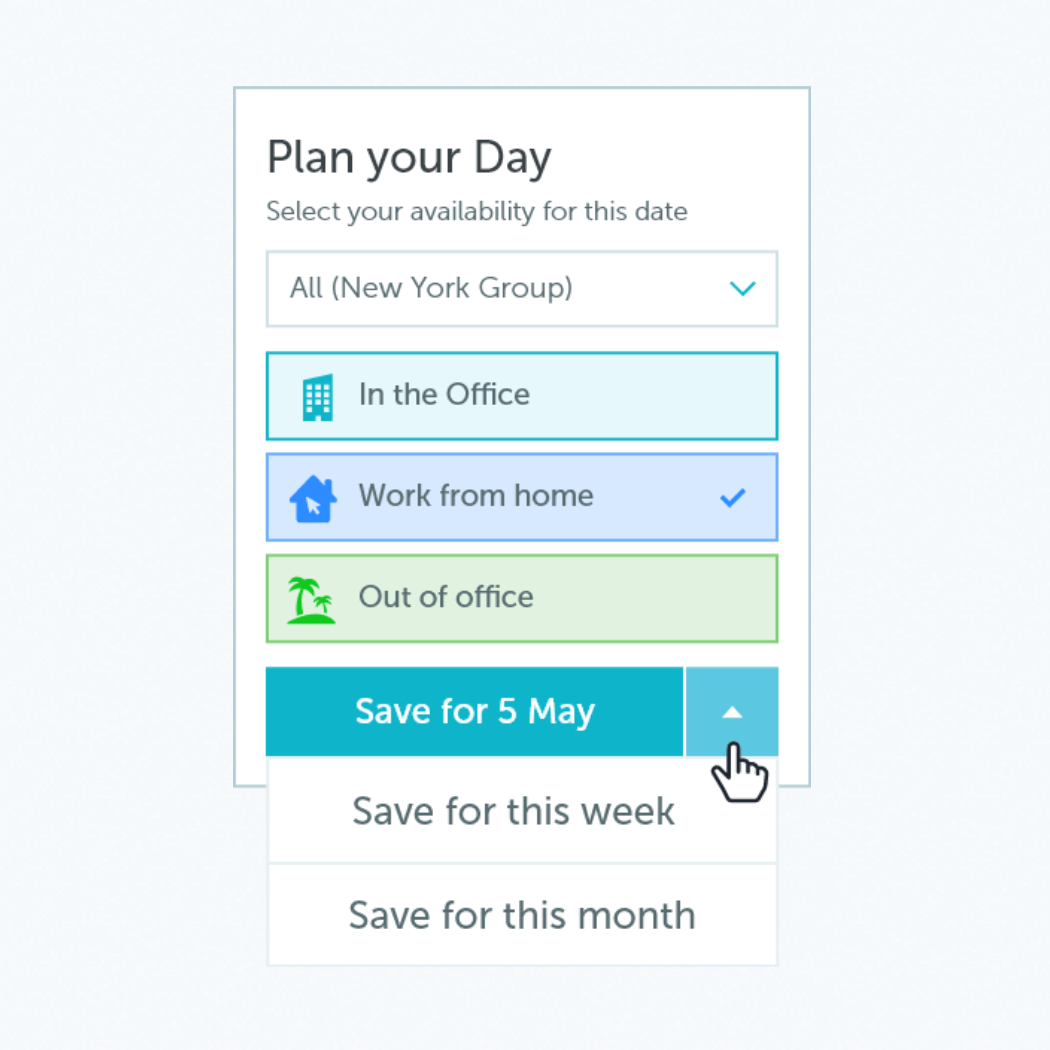
Flexible & autonomous planning
Choose your work location for the day, week, or another time interval.
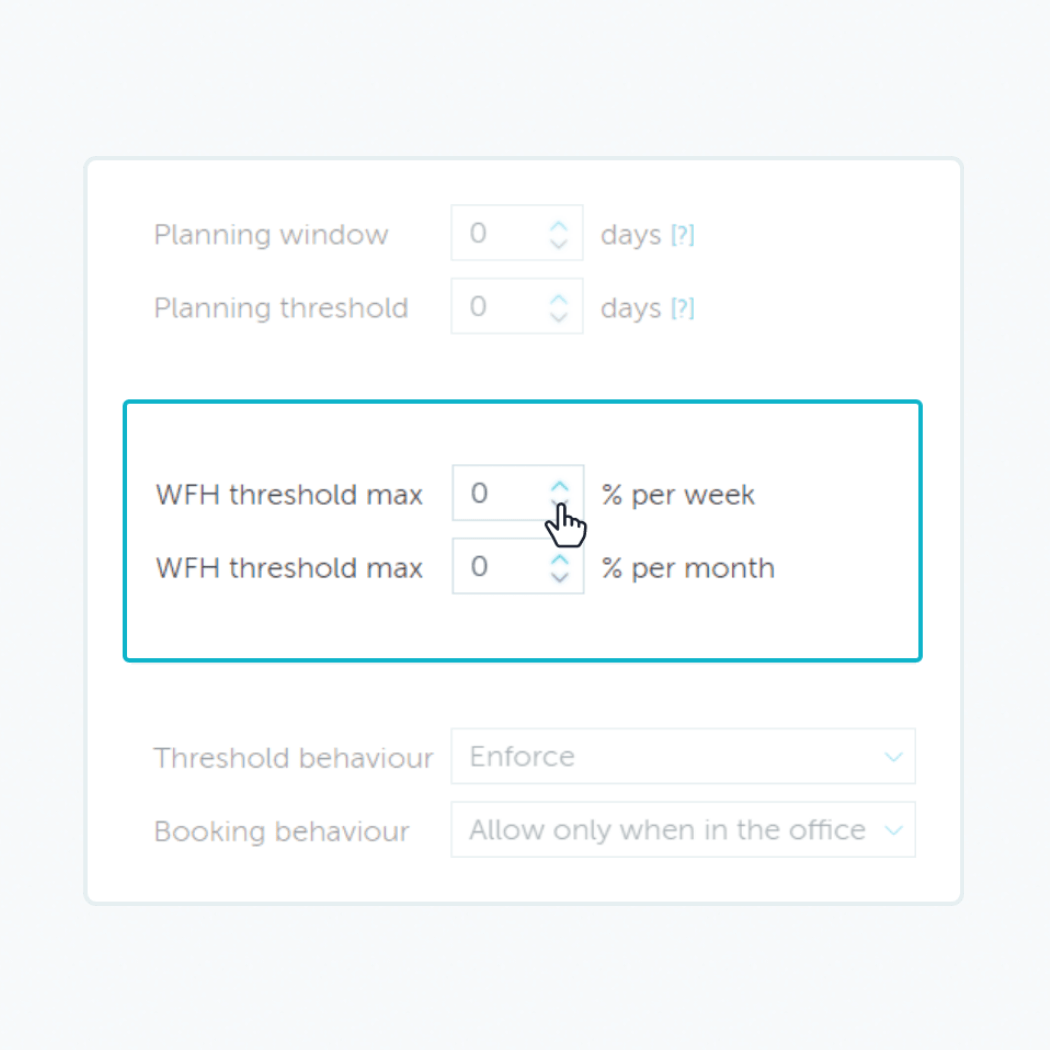
Your own hybrid work model
Define your hybrid work model rules: set up a ratio between the remote days and days in the office.
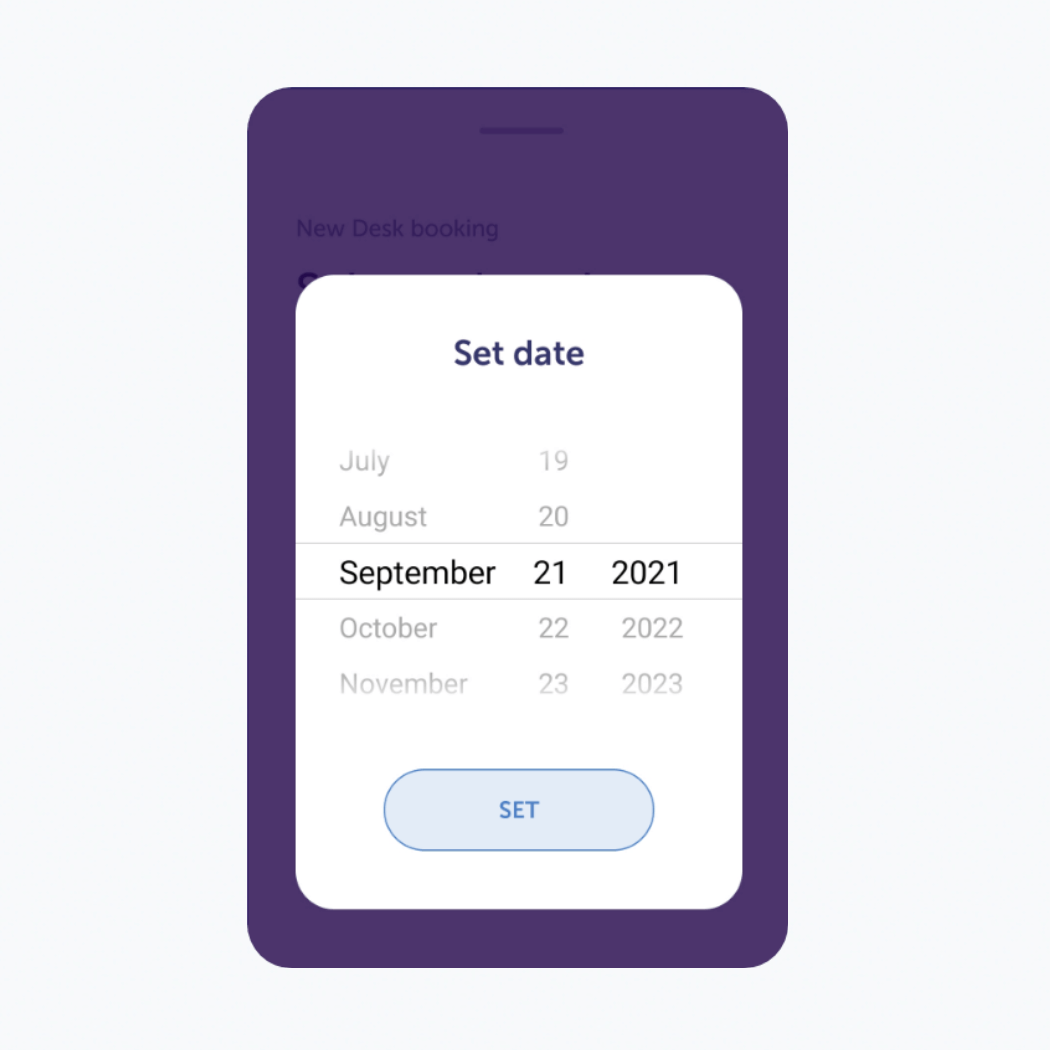
User-friendly mobile application
Schedule your day or confirm your presence at the office on the go.
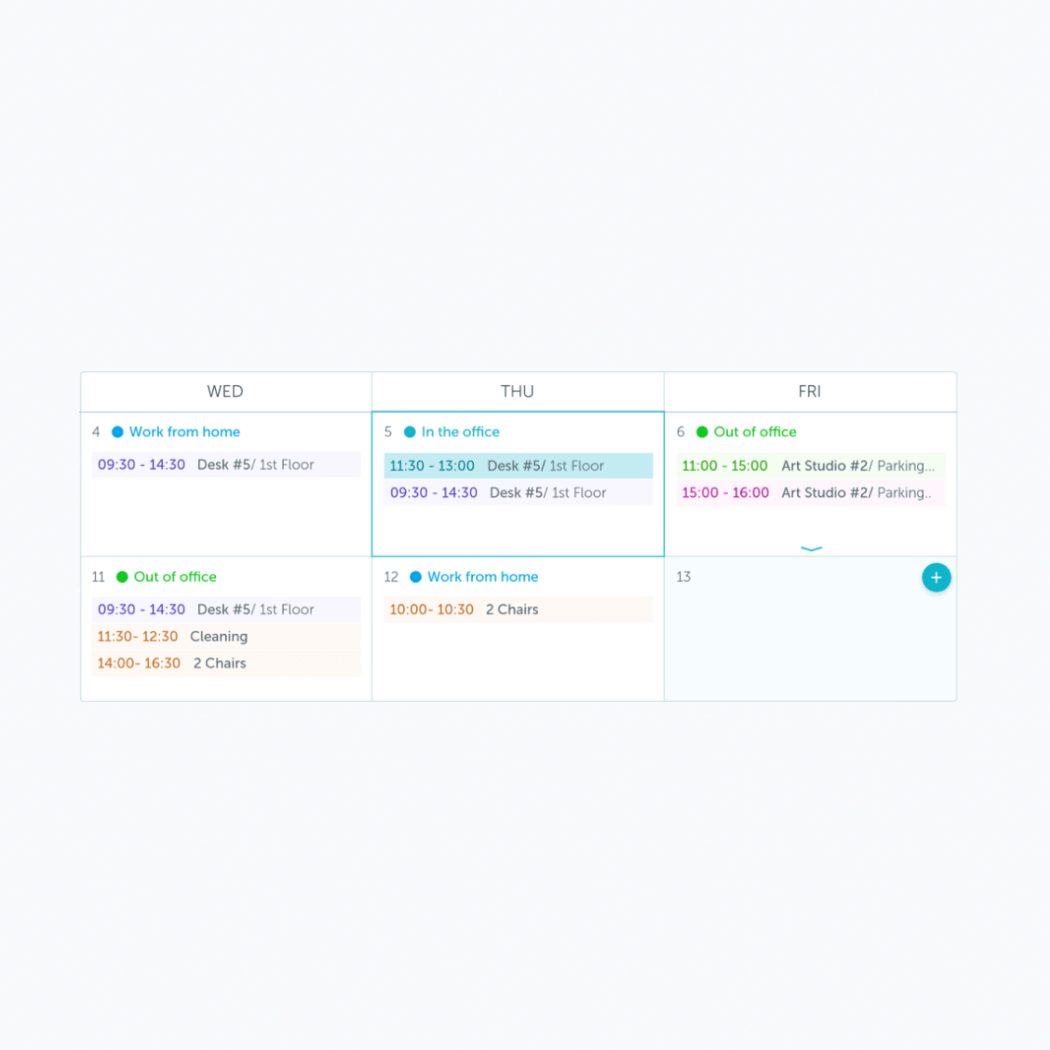
Workplace visibility
Bring hybrid work planning visibility for everyone in your organization.
HYBRID WORK MODEL: SUCCESS STORY
Creating a smart, end-to-end hybrid workplace experience for every employee at Saipem
![]()
After relocation to a new office, Saipem implemented the hybrid work model - and we helped them to get it going with our hybrid work planning software.
“Whether it’s about booking desks or creating hybrid work schedules - we now have efficient processes supported by reliable technology. We noticed an improvement in workplace productivity, as everyone can now easily reserve workspaces and plan their week.”, - says Manuele Ascia, Project Manager, Digital Corporate, Saipem.
HYBRID WORK MODEL: SUCCESS STORY
Creating a smart, end-to-end hybrid workplace experience for every employee at Saipem
![]()
After relocation to a new office, Saipem implemented the hybrid work model - and we helped them to get it going with our hybrid work planning software.
“Whether it’s about booking desks or creating hybrid work schedules - we now have efficient processes supported by reliable technology. We noticed an improvement in workplace productivity, as everyone can now easily reserve workspaces and plan their week.”, - says Manuele Ascia, Project Manager, Digital Corporate, Saipem.
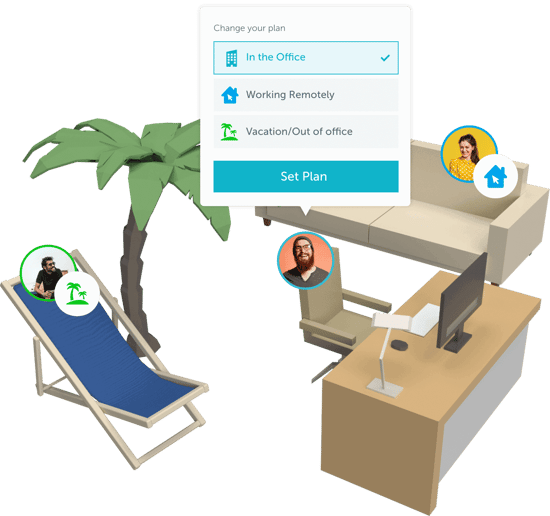

Insights to get you started
Getting started with a hybrid work model is no small feat.
We collected a couple of insightful resources to help you navigate the sea of information. Continue your research:
Hybrid work model: FAQ
A hybrid work model is a type of work arrangement that combines both remote and in-office work. In a hybrid workplace, employees have the flexibility to work from home or a remote location for part of their workweek and come into the office for the remainder. This approach offers “the best of both worlds”: increased flexibility and reduced commuting time as well as face-to-face collaboration and better access to company resources. The exact hybrid work model can vary from organization to organization, with different combinations of remote and in-office work depending on the needs and preferences of the employees and the company.
A hybrid work schedule is a work schedule that blends traditional work hours with flextime.
With a hybrid work schedule, employees have the option to come into the office for a set number of hours each day, or they can choose to work from home. This flexibility allows employees to balance their work obligations with their personal lives.
A hybrid work schedule is a great option for companies that want to offer their employees more flexibility, but still need them to be available during traditional business hours. It's also a great option for employees who want more flexibility in their work schedules.
There really isn't a right or wrong answer to this question – it depends on what's important to each individual. For some people, working from home is great because they can take care of their personal responsibilities and work at the same time. For others, working from home can be distracting because there are so many things that can pull them away from their work.
The best way to figure out which one is better for you is to try both options and see which one works better for your lifestyle and your productivity levels. Some people find that they are more productive when they're in an office setting with other people around them, while others find that they can do more when they're in their own space at home. Try out different methods.
There are pros and cons to working from home. Here are some of the most important ones:
Pros:
- You can avoid the rush hour traffic.
- Some people find it easier to concentrate in their home environment.
- No one is watching you to make sure you're working.
- You can work in your pajamas.
Cons:
- It can be hard to stay focused when you're not in an office setting.
- There's no one to bounce ideas off of or to collaborate with.
- You might get lonely working by yourself all day long.
- It's easy to put off work if you're not motivated.
There are pros and cons to working in the office. Here are a few:
Pros:
- You have a set schedule and can structure your day accordingly.
- You have access to all of the office supplies you need.
- You can get help from your colleagues if you're stuck on a project.
- You can take advantage of networking opportunities.
Cons:
- You might feel overwhelmed if you have a lot of work to do.
- The office can be noisy and distracting.
- You’re wasting your time on commuting
It really depends on what works best for each individual. Some people prefer to work from home so they can avoid distractions, while others thrive in an office environment.
A hybrid work plan is a work plan that allows employees to work both from home and from the office, as per their preferences or the specific company policy. There are multiple models of hybrid work plans, but in essence, they all narrow down to one basic rule: enabling people to be flexible about their work location.
There's no one-size-fits-all answer to this question, as the best hybrid work policy will vary depending on the specific needs and situation of your company. However, here are some general tips to help you create a hybrid work policy that works for your business:
- Define what you mean by "hybrid work." Do you want employees to be able to work from home? Or do you want them to be able to split their time between the office and home? Or something else entirely? Make sure everyone is on the same page about what hybrid work means.
- Establish guidelines for how often employees can work from home. This will help ensure that everyone is working in a consistent environment.
- If your employees don't work on anything confidential or sensitive, consider allowing them to bring their work home with them (in other words, try "bring your own device" at work). This could help increase productivity and engagement, while also cutting down on overhead.
- Involve employees in the discussion of a hybrid work policy. A collaborative approach to creating a work policy can be more effective than an imposed policy. It will also tend to create better morale around the office.
- Evaluate your company's needs regularly and make changes to the hybrid work policy as needed. The best policies are flexible, so don't be afraid to make tweaks as your business evolves.







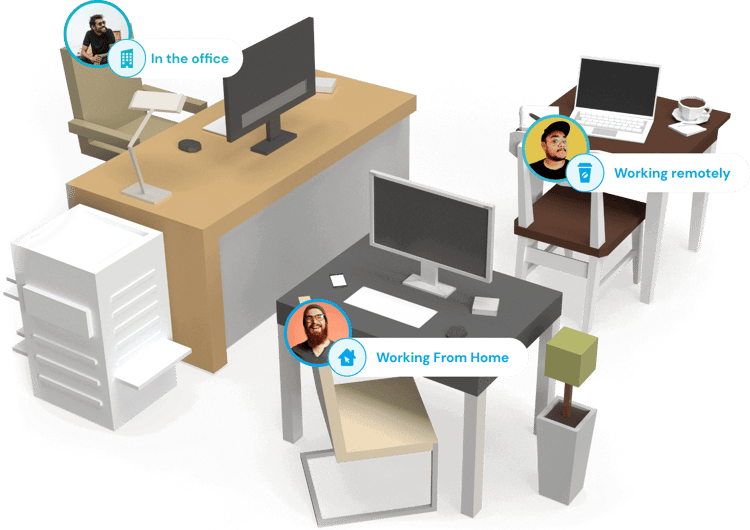
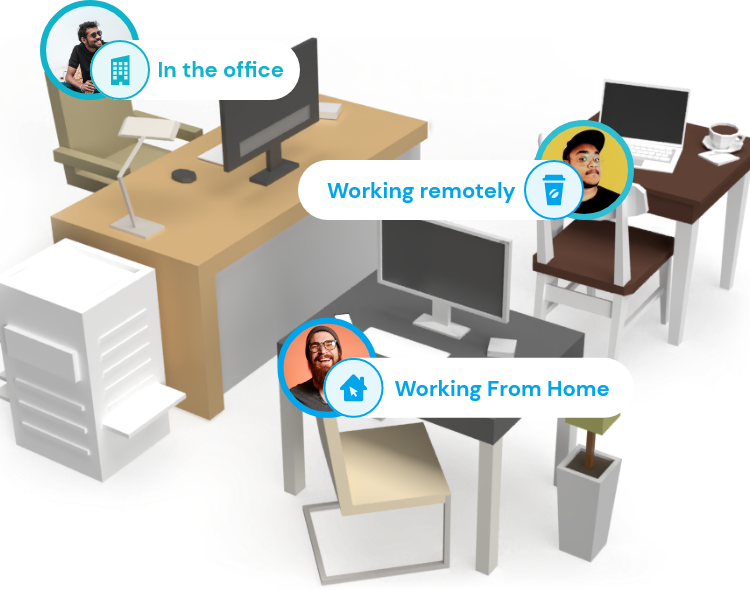


%20(14)-3.png)



